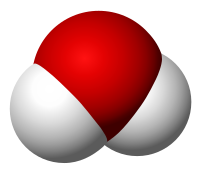History of molecular theory

Molecular theory is a big word that means scientists use smaller pieces of things to help understand how big things work. A long time ago, many people thought everything was just made of a bunch of tiny pieces stuck together, called atoms. But then, some scientists realized that atoms could join together to make molecules, which are like tiny little groups of atoms.
One of the first people to figure this out was a man named John Dalton. He lived a long time ago, in the 1700s and 1800s. He came up with the idea that different elements (like oxygen or hydrogen) were made up of different atoms. He also thought that when atoms joined together, they did it in very specific ways. This helped people understand why some things combined easily, and others did not.
Later on, other scientists built on Dalton's ideas and figured out more about how molecules work. One big thing they learned was that molecules can have different shapes, and that can affect what they do. For example, the shape of a molecule can affect how it smells, or how it reacts with other things.
One scientist who was important in this area was Linus Pauling, who lived in the 1900s. He studied how different molecules fit together, almost like puzzle pieces. He found out that some molecules had certain shapes that made them very good at bonding with other molecules. Other shapes didn't work as well, and sometimes even caused problems.
Today, scientists still study molecules and how they work. They have developed new technologies that allow them to see these tiny things, and they use that information to help create new medicines and materials. So even though it can seem complicated, understanding molecules is very important for making lots of things in our world work!
One of the first people to figure this out was a man named John Dalton. He lived a long time ago, in the 1700s and 1800s. He came up with the idea that different elements (like oxygen or hydrogen) were made up of different atoms. He also thought that when atoms joined together, they did it in very specific ways. This helped people understand why some things combined easily, and others did not.
Later on, other scientists built on Dalton's ideas and figured out more about how molecules work. One big thing they learned was that molecules can have different shapes, and that can affect what they do. For example, the shape of a molecule can affect how it smells, or how it reacts with other things.
One scientist who was important in this area was Linus Pauling, who lived in the 1900s. He studied how different molecules fit together, almost like puzzle pieces. He found out that some molecules had certain shapes that made them very good at bonding with other molecules. Other shapes didn't work as well, and sometimes even caused problems.
Today, scientists still study molecules and how they work. They have developed new technologies that allow them to see these tiny things, and they use that information to help create new medicines and materials. So even though it can seem complicated, understanding molecules is very important for making lots of things in our world work!
Related topics others have asked about:
